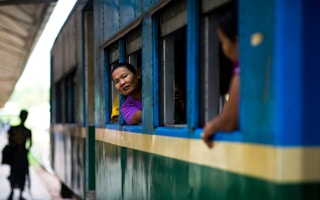My favorite animal is the Bengal tiger. It’s a gorgeous big cat, but sadly its numbers have dwindled over the past century, first from hunting for sport in the 1920s and 1930s and later on by impacts of infrastructure development.
Infrastructure is a public good, and crucial for economic growth. But it needs to be carefully planned and built so it doesn’t wreak havoc on the environment either by destroying natural habitat and biodiversity or causing other environmental ills such as elevated pollution levels.
The Bengal tiger is just one of the many natural resources in the air, water, and on land that define the quality of our lives – and indeed the planet itself. The interdependency of this natural environment with human lives is ever more visible, and should not be undermined by human construction.
Deforestation in tropical rainforests, some experts claim, adds more carbon dioxide to the atmosphere than the total sum of smoke-belching cars and trucks on the world’s roads. At the heart of much deforestation and depletion of natural resources is the fast pace of environmentally “disrespectful” infrastructure.
Perhaps at the risk of being dramatic, one can suggest that the future quality of infrastructure development in Asia will define whether our environment and consequently our lives go beyond the climate’s sustainability tipping point.
But equally dramatic is the region’s need for better infrastructure to keep growing and continue reducing poverty. So our goal should be to ensure that future infrastructure development is high quality and environmentally responsible.
There is a lot more infrastructure to be built. ADB estimates about $1.7 trillion of it per year is needed in developing Asia and the Pacific through 2030 to sustain growth, reduce poverty and cope with climate change impacts.
If we want “green” infrastructure, we must pay for it through green finance. This is the driving force behind Catalyzing Green Finance, a major ADB publication recently launched in Paris, the city that in late 2015 hosted the signing of an ambitious global agreement to finally do what’s needed to address climate change once and for all.
The rationale behind all this is two-fold.
First, governments don’t have the funds to meet the large infrastructure funding needs, so the private sector will have to back anywhere between 40 per cent to 85 per cent of each project. But these funds cannot flow if the risk perception is too high. Indeed, the private sector will always need a risk-adjusted return for an investment.
The second aspect is the right mix of efficiencies in technology, implementation, and management (TIM). Apologies in advance for adding this term to the already long list of development jargon, but TIM is crucial for green infrastructure projects.
GFCFs for infrastructure
The pace of technological change is so rapid these days that it does not make sense to just define the technology needed for a given project. Why not instead, with certain checks and balances, set the targets we want from a water project for say reduction of water losses, and then encourage the implementer to beat that target with whatever technology they choose?
The ADB report urges governments to create green finance catalyzing facilities (GFCFs) for infrastructure. These are funding vehicles designed to use concessional public funds – not for building assets. Rather, they take on the ‘risks’ of infrastructure projects, and incentivize faster greening of the project to achieve much better impacts on the natural environment.
GFCFs can also pool projects together in one financing vehicle to diversify risks. This, in turn, would allow wider access to the larger quantum of finance available through pension and insurance funds—$10 trillion in Asia by some estimates—from capital markets through green equity and bonds.
The structure is actually not that difficult for governments to create. Much of the rationale has been tried and tested in some form or other in infrastructure finance, mostly private sector-led but also via other mechanisms such as the Indian government’s Viability Gap Fund.
What is more crucial to success is the determination, speed, and capacity of governments to set up such national financing vehicles. Multilateral development banks like ADB can help in this process with their knowledge and funds.
GFCFs, nevertheless, are just one of many arrangements for greening finance. There are many more instruments that must be added on. One of these could be a successor to the carbon trading mechanism developed under the Kyoto Protocol, to give a monetary value to the unquantified green benefits of infrastructure projects.
Only when green finance is mainstreamed into every financing decision—whether it’s a government grant or debt or private impact funds or equity—will the selection of projects ensure not just value for money but also value for the environment.
Then we will ask ourselves: do we build a cheap bridge for private vehicles that will probably only be useful for a few years before it becomes congested again, or do we invest more funds in a long-term mass transit system powered by renewable energy?
Adopting such green thinking will eventually lead to less environmental destruction and greater biodiversity. Rather than watching Bengal tiger populations decline over time, they may actually increase so our children and grandchildren may enjoy them. Funds invested in infrastructure development could then be viewed though a new filter beyond simply black (profitable) or red (unprofitable): the green of environment enhancing.
Infrastructure development is as necessary for human beings as the natural capital that sustains our lives, learning, and livelihoods; green finance is the catalyst that ensures both grow together. I want to see more tigers, and also have a good transport network that takes me to where the tigers are, so let’s use financial incentives to choose the best transport project from this perspective – that’s what greening finance means for me.
Anouj Mehta is principal financial management specialist, ADB. This article is republished from the ADB Blog.











